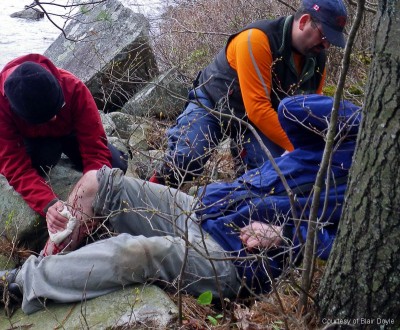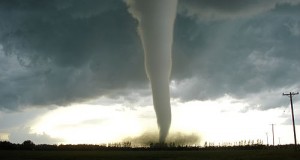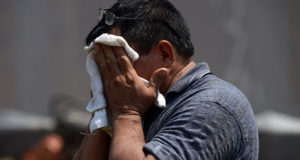
Image source: MorgansCloud.com
Every survival kit should have first aid supplies, but even those supplies may not include what is needed in dealing with serious injuries when out in the wild, such as a bone fracture, dislocation or sprain.
Accidents like these can and do happen in the wilderness, so you should be well-prepared in your knowledge of what to do. Hopefully, this article will serve as a good starting point.
Fractures
There are two kinds of fractures: open fractures and closed fractures. An open fracture is where a bone can protrude through the skin (which would combine the fracture with an open, bleeding wound), and it’s sometimes called a compound fracture. A closed fracture, on the other hand, will have no open wounds.
Symptoms of a fracture include immense pain in the affected area, skin discoloration, swelling and a partial or total lack of function in the area. This can lead to numerous complications, ranging from a severed blood vessel, to numbness, shock and even internal bleeding. It is imperative that you treat the fracture immediately.
Get two branches that have a diameter of at least two inches, and make sure that they run along the length of either your arm or your leg, whichever one has the fracture. You’ll need both branches to run evenly, and pad them with whatever materials you have. Then, tie the splint around your arm or leg using whatever resources are available to you: rope, cloth, vines, etc. Tie it firmly around the ankle or the wrist, around the knee or the elbow, and then around the upper leg or the upper arm.
The Pack For Anybody Who Wants To Be Fully Prepared For An Unexpected Emergency
Make sure that the broken leg or arm remains as long or longer than the unbroken one, and don’t perform much physical activity with it. Get some rest, drink plenty of water, and prevent the onset of headaches by wrapping a damp bandana around your head. You’ll also need to eat plenty of food to keep your energy levels up.
You also may want to elevate the site of the fracture for proper blood circulation.
Dislocations
A dislocation is the separation of bone joints that causes an entire limb to go out of alignment. It is extremely painful, can cause immense nerve damage, and can also affect the flow of blood circulation around the body. Symptoms of dislocations include pain in the affected joints, swelling, skin discoloration, limited movement of the joints and deformity of the joints. If you have suffered a dislocation, treat it immediately, and if you have anybody with you, they should perform the action for you.
First, take any pain relievers that you have in your medical kit. Then, use manual traction to carefully pull the dislocated bone away from the joint. This will be immensely difficult, will send shooting pain throughout your body, and will most likely require several attempts. But then again, you’re not in the medical emergency room. You’re in the wilderness.
As you pull the bone away from the joint, this will give the bone more room to slip back into place. Firmly but slowly, push the bone again so that it is in line with the joint. The good news here is that the bone will naturally want to be placed in line with the joint. Immediately after the bone is in place, you’ll feel much pain relief.
Ultra-Efficient Water Filter Fits In Your Pocket!
At that point, treat the dislocation as if it were a fracture. Create a splint and padding and run it up and down the fracture site, and tie it very tightly.
Sprains
A sprain is the overstretching of tendons or ligaments. Symptoms of sprains include discolored skin, tenderness and/or swelling in the affected area, and pain.
Fortunately, treating sprains is much simpler than treating fractures and dislocations, but still should not be taken lightly.
Begin by resting the injured area, then ice it for 24 hours. If you don’t have any ice with you, soak a bandana or article of clothing in cool water, and place it over the site of the sprain. You’ll then want to splint the injured area to keep it stabilized, and after splinting it, elevate the affected area to ensure proper blood circulation.
What medical survival tips do you have? Leave your reply in the section below:
 Off The Grid News Better Ideas For Off The Grid Living
Off The Grid News Better Ideas For Off The Grid Living




